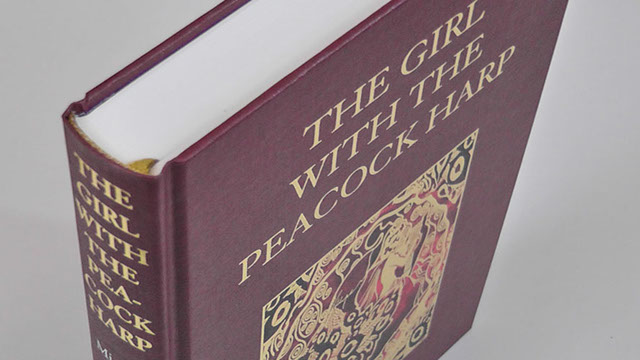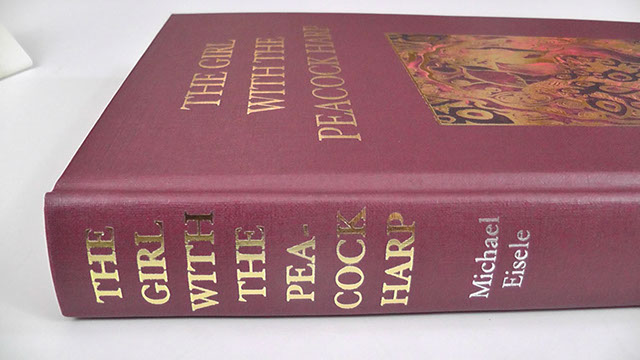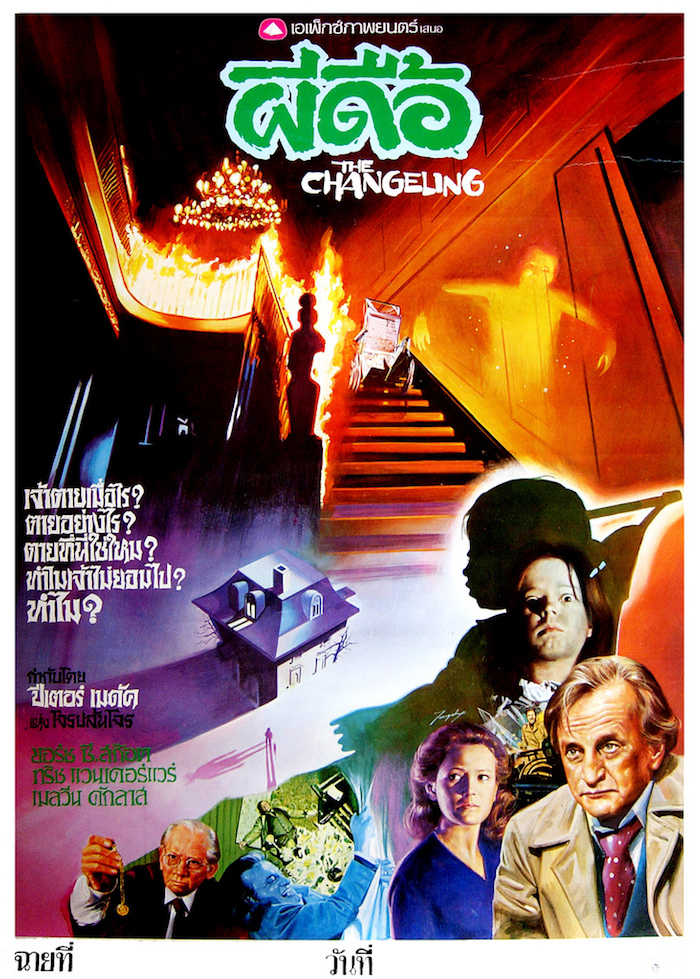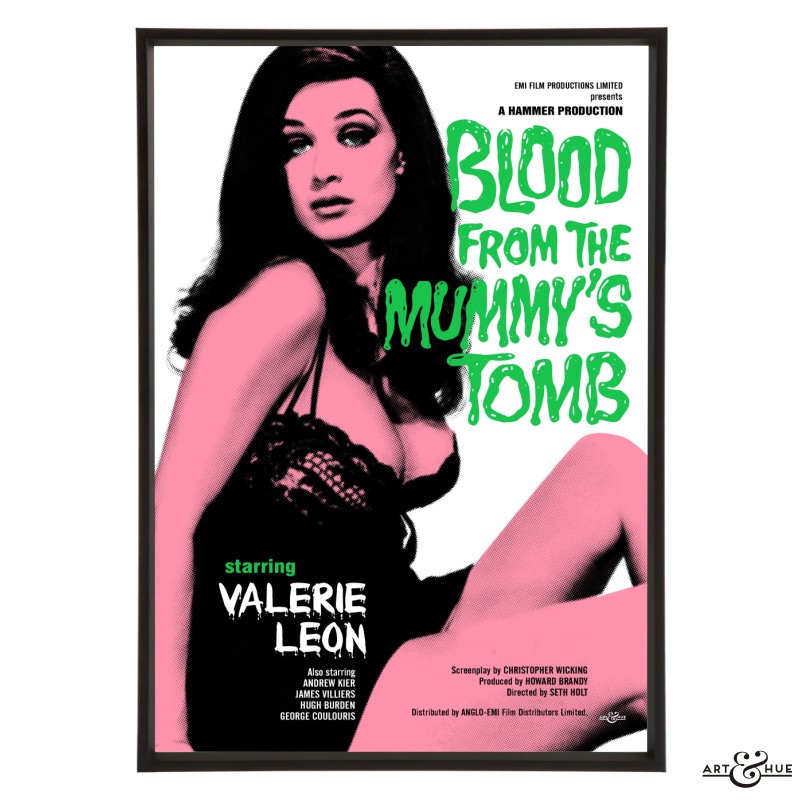'You can look at a stranger's face anywhere you may be and behind the face is a story...'
So begins a tale of the Emerald Isle, and a variation on an old theme in Michael Eisele's collection The Girl with the Peacock Harp. Mary Murphy is an Irish country girl with big ambitions, who reinvents herself as Gloria, a blonde bombshell. She doesn't manage to bag herself the kind of handsome husband with good prospects, though, until she happens to take a stroll along the beach at Dundalk. There she sees four of the seal-folk changing their skins. Gloria knows enough to grab the skin of a handsome male 'selchie', and this puts him in thrall to her.
Needless to say, this forced relationship does not end well, though at first Frank - as the marine chap is dubbed - seems to bring Gloria luck as well as lovable children. It's a neat twist on the more traditional treatment, when a man steals the skin of a female selchie/selkie to make her his beautiful bride. Behind the folk tale lies, perhaps, the doubts we all feel about the inequalities of love, bound up with equally deep qualms about the relationship between ourselves and the natural world.
Another review tomorrow, assuming I can find my skin again.
Monday, 31 October 2016
Seek Ye the Mark of the Witch!
That's an official message, up above. People in England are being urged to find witches' marks inside the fabric of old buildings. The marks were supposed to ward off evil forces that threatened the household, attributed to witches consorting with demons and generally misbehaving. Today we have estate agents.


Faint symbols have been recorded in buildings and sites across England, including Shakespeare’s birthplace in Stratford-upon-Avon, the Tower of London, and Wookey Hole caves in Somerset – where a tall stalagmite has been shown to tourists for centuries as the petrified body of a witch.
The patterns include flower-like designs made with compasses and dividers, pentangles, intertwined Vs and Ms for the Virgin Mary, and tangles of lines which it was believed confused spirits who attempted to follow them. Tadpole-shaped scorch marks made with a candle flame have also been found.
Hallowe'en-y Listening
Let me invite you to pour yourself an comfy chair, settle down in a glass of port, and listen to some suitably weird tales for this ghostly, grisly, and garfunkely season.
First up, a bit of Bram Stoker in one of his stranger phases, adapted for the old BBC wireless.
Next, a radio drama with a fairly familiar theme...
Finally, something a little more subtle by a poet who wrote some of the most enigmatic and absorbing weird tales.
First up, a bit of Bram Stoker in one of his stranger phases, adapted for the old BBC wireless.
Next, a radio drama with a fairly familiar theme...
Finally, something a little more subtle by a poet who wrote some of the most enigmatic and absorbing weird tales.
Sunday, 30 October 2016
'What Dreams May Come'
Today's story in Michael Eisele's The Girl with the Peacock Harp takes a classic theme and re-works it to interesting effect. Fritz Leiber, Charles Beaumont, and James Thurber are just three authors who tackled the idea of the dream that is more real than mundane reality. But in all those cases the dream proved deadly to the dreamer. Things are rather different here.
In the blurb Eisele's tale is summed up thus: '‘What Dreams May Come’ moves the scene to modern day Manhattan, as an advertising executive is haunted by dreams of a giant raptor.' This is true but also slightly misleading, as the executive in question in a divorced woman in a man's world who finds her dream-life as a female bird of prey far more acceptable than her job. She takes delight in flight, predation, and her high status as a female in a quasi-matriarchal culture.
Whether her other self is in a parallel universe, some remote epoch of our world, or perhaps another planet is not clear. What we can be sure of is that her ending resembles that of Beaumont's protagonist in his tale of the same name (as seen in Season 1 of The Twilight Zone). But it's by no means clear that this is someone cracking up under pressure. The narrative dream of power and status may indeed be the opposite of escapist.
In the blurb Eisele's tale is summed up thus: '‘What Dreams May Come’ moves the scene to modern day Manhattan, as an advertising executive is haunted by dreams of a giant raptor.' This is true but also slightly misleading, as the executive in question in a divorced woman in a man's world who finds her dream-life as a female bird of prey far more acceptable than her job. She takes delight in flight, predation, and her high status as a female in a quasi-matriarchal culture.
Whether her other self is in a parallel universe, some remote epoch of our world, or perhaps another planet is not clear. What we can be sure of is that her ending resembles that of Beaumont's protagonist in his tale of the same name (as seen in Season 1 of The Twilight Zone). But it's by no means clear that this is someone cracking up under pressure. The narrative dream of power and status may indeed be the opposite of escapist.
Saturday, 29 October 2016
Interview up at greydogtales
It had to happen. Someone only went and asked what I actually 'think' about various matters, such as weird fiction. If you can stand the shock, the interview is here. It's a very good site, with lots of interesting things. And a bit about me. And ST, of course.
'The Eyes'
We're back in Old Russia for the next story in Michel Eisele's The Girl with the Peacock Harp. 'The Eyes' begins with Natalia leaving her eighteenth birthday party on an impulse, after feeling stifled by a multiplicity of suitors. It is winter, and instead of taking the usual way home Natalia orders her driver to take the one horse sort-of open sleight onto the frozen Neva. A pack of wolves emerges from the woods and a hot pursuit begins, with the wolves gaining...
This is a vignette that lingers in the mind thanks to some powerful imagery. The lead wolf, a black-furred creature, fascinates Natalia, who sees in him something lacking in the (implicitly) over-civilised adult life she has symbolically rejected. It's a Romantic story in the original sense of the term, favouring passion over reason, the intensity of the moment over the pleasures of moderation. That said, Natalia keeps a gun in her handbag, so the ways of technological civilisation are not to be spurned entirely.
Short story, short review. I'll have another one soon, if the wolves don't get me.

This is a vignette that lingers in the mind thanks to some powerful imagery. The lead wolf, a black-furred creature, fascinates Natalia, who sees in him something lacking in the (implicitly) over-civilised adult life she has symbolically rejected. It's a Romantic story in the original sense of the term, favouring passion over reason, the intensity of the moment over the pleasures of moderation. That said, Natalia keeps a gun in her handbag, so the ways of technological civilisation are not to be spurned entirely.
Short story, short review. I'll have another one soon, if the wolves don't get me.

Friday, 28 October 2016
Locations for 'A Warning to the Curious'
This excellent piece at the BFI site looks at the use of landscape, light, and various locations for Lawrence Gordon Clark's 1972 adaptation of the classic tale. Fans of Clark will know that the adaptation stars Peter Vaughan as Paxton, who is presented not as a well-to-do young man with antiquarian leanings but a jobless amateur archaeologist.
Paxton has become far more sympathetic through actually having a desperate, financial reason for finding the crown. But, more importantly, Clark has changed James’s landscape from one of a shadow Aldeburgh in Suffolk to the north Norfolk coast – a pivotal shift of topography that results in a number of intriguing changes.Adam Scovell goes on to compare the two settings, and clearly enjoyed visiting the various locations. It's a pleasant read and one to whet the appetite if, like me, you plan to re-watch the programme on Hallowe'en.
 |
| Aldeburgh;s Martello Tower |
'The Lighthouse'
The fourth story in Michael Eisele's collection The Girl with the Peacock Harp has a British setting, but still takes place in the same 'Weird 19th Century' as the previous three tales. It's told from a first-person perspective, however, which makes an interesting contrast the folk-tale approach of the earlier stories. First-person tales can offer the reader 'extreme close ups' on the strange that the third person tends to make difficult.
The narrator is a lighthouse keeper, recently retired from a life at sea, who thinks his new job will be a near-sinecure. But the enthusiasm which which the board recruits him, and some talk with a typically gnomic local, makes it clear early on that the post is problematic. After all, if your job interview consists largely of a series of questions about mythical sea creatures, there's obviously something going on.
It's a nicely-crafted tale, as the lonely hero discovers that the 'Professor' who built the lighthouse and was its first keeper incorporated a mysterious speaking tube into the design. The copper pipe reaches down into an undersea cave, and when the narrator unstops it he hears more than the sounds of the waves. He becomes a victim of enchantment, and the being that casts her spell over him is described in just enough to detail to convey a sense of strangeness, beauty, and danger. Will he, and others, suffer a terrible fate as the sea-being urges him to neglect his duties at the height of a storm?
I love supernatural sea stories and this one was right up my street, or perhaps strait. My only quibble is that the author's grasp of history seems a bit wonky. Early on we read that the narrator travels to the nameless seaport by coach, but later we learn that in his youth he sailed in a steel-hulled ship. This makes no sense as stagecoaches were wiped out by the railways at the same time that steel ship construction became commonplace. But this is a minor point for history nerds.
Another story reviewed tomorrow, if I'm spared by the mer-folk!
The narrator is a lighthouse keeper, recently retired from a life at sea, who thinks his new job will be a near-sinecure. But the enthusiasm which which the board recruits him, and some talk with a typically gnomic local, makes it clear early on that the post is problematic. After all, if your job interview consists largely of a series of questions about mythical sea creatures, there's obviously something going on.
It's a nicely-crafted tale, as the lonely hero discovers that the 'Professor' who built the lighthouse and was its first keeper incorporated a mysterious speaking tube into the design. The copper pipe reaches down into an undersea cave, and when the narrator unstops it he hears more than the sounds of the waves. He becomes a victim of enchantment, and the being that casts her spell over him is described in just enough to detail to convey a sense of strangeness, beauty, and danger. Will he, and others, suffer a terrible fate as the sea-being urges him to neglect his duties at the height of a storm?
I love supernatural sea stories and this one was right up my street, or perhaps strait. My only quibble is that the author's grasp of history seems a bit wonky. Early on we read that the narrator travels to the nameless seaport by coach, but later we learn that in his youth he sailed in a steel-hulled ship. This makes no sense as stagecoaches were wiped out by the railways at the same time that steel ship construction became commonplace. But this is a minor point for history nerds.
Another story reviewed tomorrow, if I'm spared by the mer-folk!
Ghosts & Historians
A fascinating scholarly item has been lobbed my way by author Steve Duffy. In 'Why Historians Needs Ghosts' Dr Francis Young points out that Hallowe'en prompts a wave of interest in local history via widely credited tales of the supernatural.
Ten years ago, ‘ghost tours’ were considered cheap and vulgar, and largely confined to privately run attractions. Nowadays, highly respected heritage organisations like English Heritage and the National Trust are in on the act, and the Hallowe’en ghost tour has become an accepted part of the calendar at many stately homes and castles.Dr Young rightly points out that local ghost stories are the one kind of local history you can find in every bookshop. But it is, he observes, part of a very long tradition, something fans of the fictional ghost story already know. And by this stage in the essay I think we all know who's going to pop up as the true progenitor of modern spooky local history.
The spirit of (...) ‘supernatural antiquarianism’ was distilled in the nineteenth and twentieth centuries by Montague Rhodes James, a writer who would never have anticipated his contemporary popularity; at the same time, I suspect he would be appalled that his considerable and ground-breaking historical work in church history is now overlooked by even the most die-hard fans of his ghost stories.Well, that may be true of some - I've visited an awful lot of old churches and learned a lot about their history thanks to MRJ. But these are short extracts from a longer read, and I urge you to follow the link and take a look.
Thursday, 27 October 2016
'The Music'
The third story in The Girl with the Peacock Harp follows 'The Beginning' and takes up that story with Maximilian, the brilliant violinist, performing for loose change as a busker. Many years have passed since he fled his home, and he lives a miserable hand-to-mouth existence.
A leading composer hears Maximilian's brilliant improvisations and seeks to exploit them. It is the fashion to incorporate folk music in 'serious' music. However, what amounts to a kidnapping of the old man merely reinforces how alien the world of formal composition is Maxilimian. The old man escapes and returns to his own people.
As in the previous tales, Michael Eisele conjures up a lost Europe of gaudy aristocracy rubbing shoulders with grinding poverty in the cities, while the Romany/gypsy folk do their best to survive in the margins of 'respectable' society. It's clear where the author's sympathies lie. The nomads, with their living culture of music and song, are warm and humane, according to their own lights. The 'civilised' people can be well-meaning but are seldom likeable.
While reading these first stories in TGwtPH I wondered why so many good writers - other good examples are John Howard and Mark Valentine - are writing about central and eastern Europe before or between the world wars? Nostalgia might have something to do with it. A desire to escape from modern, post-literate culture might also be involved. The influence of Decadent literature is also apparent sometimes. But this is the stuff of which other people's Ph.Ds are made...
Another story reviewed tomorrow!

A leading composer hears Maximilian's brilliant improvisations and seeks to exploit them. It is the fashion to incorporate folk music in 'serious' music. However, what amounts to a kidnapping of the old man merely reinforces how alien the world of formal composition is Maxilimian. The old man escapes and returns to his own people.
As in the previous tales, Michael Eisele conjures up a lost Europe of gaudy aristocracy rubbing shoulders with grinding poverty in the cities, while the Romany/gypsy folk do their best to survive in the margins of 'respectable' society. It's clear where the author's sympathies lie. The nomads, with their living culture of music and song, are warm and humane, according to their own lights. The 'civilised' people can be well-meaning but are seldom likeable.
While reading these first stories in TGwtPH I wondered why so many good writers - other good examples are John Howard and Mark Valentine - are writing about central and eastern Europe before or between the world wars? Nostalgia might have something to do with it. A desire to escape from modern, post-literate culture might also be involved. The influence of Decadent literature is also apparent sometimes. But this is the stuff of which other people's Ph.Ds are made...
Another story reviewed tomorrow!

Wednesday, 26 October 2016
Stay Tuned for Terror!
... if you like that sort of thing. Personally I enjoy story readings, and BBC Radio 4 has very kindly set aside it's regular 'Book at Bedtime' for pre-Hallowe'en treats, among them a three-part story by Stephen King. It's entitled 'Cookie Jar', and is a new one on me. Looking forward to it!
Information is here. Ooh, and there's also a Stephen King Quiz. I got 8/10, so it's not that hard.
Information is here. Ooh, and there's also a Stephen King Quiz. I got 8/10, so it's not that hard.
 |
| Yeah, I'll just have some crisps, ta very much... |
'The Beginning'
The second story in The Girl With the Peacock Harp is set in roughly the same time as the first, and in a not dissimilar place. We move from Tsarist Russia to the realm of the Hapsburgs in the late 19th century (judging from internal evidence). Michael Eisele conjures up a world in which the Romany people still travel in horse-drawn wagons and anarchists throw bombs into carriages.
One fortunate clan is allowed by a human Graf to camp on his estate every year, and it is there that the nobleman's heir, Thomas, forms a childhood friendship with Kisaiya the 'gypsy' girl. An unfortunate prank leads to a mock betrothal between the two, and Kisaiya becomes obsessed with the idea that she is destined to be with Thomas. He is sent away to school, but when he returns he is re-united with his paramour and swears to marry her for real.
Needless to say this causes ructions among the nobility but, thanks to some machinations by a cunning flunky, Kisaiya is turned into a lady and the wedding takes place. We know, however, that the marriage will not be a happy one, as most of the story takes place in an extended flashback. Kisaiya gives birth to a son and, despite being forbidden from speaking her own tongue to him, passes on one vital part of her culture - a love of music.
Aided by a Romany violin, young Maximilian becomes a gifted musician, but not in the style of the 'gaje' or supposedly civilised folk. Instead he feels compelled to play brilliant improvisations, outraging his father's sensibilities. The final crisis, in which Kisaiya struggles to liberate her son from the rigid orthodoxy she unwisely adopted, is 'The Beginning' of Maximilian's freedom to play as he wishes.
Like 'An Old Tale', this story is only marginally supernatural, but is rather a strange tale. It has the feel of a story that might well have been told around the campfire of travelling folk, perhaps as a cautionary tale. Or perhaps not.
Another review tomorrow, I hope!
One fortunate clan is allowed by a human Graf to camp on his estate every year, and it is there that the nobleman's heir, Thomas, forms a childhood friendship with Kisaiya the 'gypsy' girl. An unfortunate prank leads to a mock betrothal between the two, and Kisaiya becomes obsessed with the idea that she is destined to be with Thomas. He is sent away to school, but when he returns he is re-united with his paramour and swears to marry her for real.
Needless to say this causes ructions among the nobility but, thanks to some machinations by a cunning flunky, Kisaiya is turned into a lady and the wedding takes place. We know, however, that the marriage will not be a happy one, as most of the story takes place in an extended flashback. Kisaiya gives birth to a son and, despite being forbidden from speaking her own tongue to him, passes on one vital part of her culture - a love of music.
Aided by a Romany violin, young Maximilian becomes a gifted musician, but not in the style of the 'gaje' or supposedly civilised folk. Instead he feels compelled to play brilliant improvisations, outraging his father's sensibilities. The final crisis, in which Kisaiya struggles to liberate her son from the rigid orthodoxy she unwisely adopted, is 'The Beginning' of Maximilian's freedom to play as he wishes.
Like 'An Old Tale', this story is only marginally supernatural, but is rather a strange tale. It has the feel of a story that might well have been told around the campfire of travelling folk, perhaps as a cautionary tale. Or perhaps not.
Another review tomorrow, I hope!
The Furniture of Horror
By furniture I mean furniture. The literal stuff you sit on and put things in and so forth, not the mental furniture of the horror fan. Because there's this rather sarcastic news in the Guardian...

It is quite logical to put the besd at the top in terms of 'Chance of Death Rating'. We've all seen a lot of films in which Maniacs or Things appear under or indeed in the bed.
The same goes for the bath. If a beautiful young lady runs in a bath in a horror movie, going all wrinkly after staying in too long is the least of her problems.
I think it's also reasonable to conclude that the TV stand is also a no-no if you're in a Japanese horror film, or an American remake of one. Get rid of the telly, and the stand it's on, and you reduce the odds of being done in by a long-haired ghost by at least 42.6 per cent, at a rough estimate.
I have to admit I'm less clear on the door, which is now the average deranged serial killer gets into most rooms, most of the times. But what do I know? I'm no furniture expert.
Chances are that Halloween has always felt a little hollow to you – an imported celebration so far removed from its original intention that it now exists solely as a delivery method for Cadbury’s Ghooost Eggs and sexy Ken Bone costumes. What we need is to go back to basics and remember what Halloween is really about: opportunistic press releases from furniture companies about the safest furniture to hide behind when there’s a murderer in your house.Yes, a list of the kind of furniture found in horror movies. Some of it impossible, or at least very difficult to hide behind on inside. Here is the 'furniture related death' table from the original press release.

It is quite logical to put the besd at the top in terms of 'Chance of Death Rating'. We've all seen a lot of films in which Maniacs or Things appear under or indeed in the bed.
The same goes for the bath. If a beautiful young lady runs in a bath in a horror movie, going all wrinkly after staying in too long is the least of her problems.
I think it's also reasonable to conclude that the TV stand is also a no-no if you're in a Japanese horror film, or an American remake of one. Get rid of the telly, and the stand it's on, and you reduce the odds of being done in by a long-haired ghost by at least 42.6 per cent, at a rough estimate.
I have to admit I'm less clear on the door, which is now the average deranged serial killer gets into most rooms, most of the times. But what do I know? I'm no furniture expert.
'An Old Tale'
'Long ago, in faraway Russia, there was a great academy of ballet.'
So begins the first story in The Girl with the Peacock Harp, The Russia that Michael Eisele is faraway in terms of history, this being the Russia of a Tsars. It is also the remote, snow-bound of fairy-tale and folkore, a strange place where - given the oddness of everyday Russian reality - almost anything might happen.
The story concerns Rasveta, daughter of a poor woman well known - perhaps intimately - to the legendary Master of the academy. When the Master admits the poor girl the high-born dancers are shocked, and some become resentful when Rasveta shows herself to be superbly talented, The death of the Master removes the poor girl's one defence against the spite of her aristocratic rivals, and she is expelled.
This might have been a realistic tragedy, but the story then develops in a surprising way. There is no Disney-style happy ending, with the poor girl vindicated and her snooty rival brought low. But there is a denouement that has all the magic and mystery of a folk tale, or indeed a Russian ballet. This is a poised, delicate start to the collection, very much in a minor key, but all the more enjoyable for that.
Another short review tomorrow.
So begins the first story in The Girl with the Peacock Harp, The Russia that Michael Eisele is faraway in terms of history, this being the Russia of a Tsars. It is also the remote, snow-bound of fairy-tale and folkore, a strange place where - given the oddness of everyday Russian reality - almost anything might happen.
The story concerns Rasveta, daughter of a poor woman well known - perhaps intimately - to the legendary Master of the academy. When the Master admits the poor girl the high-born dancers are shocked, and some become resentful when Rasveta shows herself to be superbly talented, The death of the Master removes the poor girl's one defence against the spite of her aristocratic rivals, and she is expelled.
This might have been a realistic tragedy, but the story then develops in a surprising way. There is no Disney-style happy ending, with the poor girl vindicated and her snooty rival brought low. But there is a denouement that has all the magic and mystery of a folk tale, or indeed a Russian ballet. This is a poised, delicate start to the collection, very much in a minor key, but all the more enjoyable for that.
Another short review tomorrow.
Tuesday, 25 October 2016
Mister Postman Delivers An Unexpected Package
Tartarus Press have generously sent me a review copy of a new book by a previously unpublished author. The Girl with the Peacock Harp by Michael Eisele contains fifteen stories. So, in what has become a quasi-tradition here on the ST blog, I will soon commence a 'running review' as I read through the stories, commenting here on one a day, with a bit of luck.
As you would expect from TP, it's a beautiful volume. I mean, look at it.



If the stories are anything like as good as the physical book, I'm in for a rare old read. Stay tuned for further developments, fiction fans.
As you would expect from TP, it's a beautiful volume. I mean, look at it.



If the stories are anything like as good as the physical book, I'm in for a rare old read. Stay tuned for further developments, fiction fans.
Nunkie for Hallowe'en!
"Oh, Whistle, and I'll Come to You, My Lad" from thomthomproductions on Vimeo.
Over at the video hosting site Vimeo you can find a small sample of Rob Lloyd Parry. It's a taster for a full-on 45 minute performance of the M.R. James classic 'Oh Whistle...' which goes live on Hallowe'en. It promises to be a wonderfully atmospheric production. Here is the blurb...
"Who is this who is coming…?"
M R James is acknowledged as the master of the English Ghost Story and Oh, Whistle, and I’ll Come to You, My Lad – a tale of nocturnal horror on the Suffolk coast – is considered by many to be his masterpiece.
James first performed his supernatural tales to friends at Christmas in King’s College, Cambridge in the years before the First World War. Now Nunkie and ThomThomProductions have brought this tradition back to thrilling life. Filmed in one take by the light of a single candle, this is storytelling at its most stark and effective.
So pour yourself a glass of something comforting, draw the curtains and enjoy one of the most eerie stories ever told…

Sunday, 23 October 2016
Horror Movie Posters from Thailand
By which I don't mean movies for Thai horror movies, such as Shutter. No, I mean posters for Western horror movies that really went all out to make Thai audiences think, "Ooh, that is disturbing stuff and no mistake!" Only in Thai, obviously.


Friday, 21 October 2016
Incompetent? Or blatant attempt to bring about Apocalypse?
Probably incompetent, to be honest. I mean, what respectable Satanist would try and get away with this?

Yes, it's Evil Baby Jesus. In Ontario. Steve Duffy, author of many a fine story, has drawn my attention to this, which looks... bonkers. Or evil. Or both.
Apparently the real head was broken off and stolen and they couldn't afford a proper replacement. So a local artist volunteered to have a go.
Yes, it's Evil Baby Jesus. In Ontario. Steve Duffy, author of many a fine story, has drawn my attention to this, which looks... bonkers. Or evil. Or both.
Apparently the real head was broken off and stolen and they couldn't afford a proper replacement. So a local artist volunteered to have a go.
The clay head has begun to erode from the rain after less than a week.
"I don't expect it to last long. She plans on sculpting in stone sometime next year," he said.
Lajeunesse said many parishioners have expressed hurt, surprise, and disappointment with the new head.
"It's a first try. It's a first go. And hopefully what is done at the end will please everyone," he said.
The Hex
I love radio drama, and this adaptation of M.R. James' 'Casting the Runes' is good fun. A nice pre-Hallowe'en listen.
Michael Dirda on Spooky Reading Matter
Washington Post critic Michael Dirda clearly has a thing for classic, classy supernatural fiction. In this column he recommends a lot of good stuff, and a reassuringly large number of writers concerned happen to have appeared in ST. Hooray!
I think Dirda's piece proves that the small press world is doing remarkably well when it comes to bringing quality short stories to the eager masses. We'd be snookered if it weren't for the likes of Tartarus, Swan River, etc. They are doing what big commercial publishers don't really want to - addressing a healthy niche market that will never be hugely profitable.
I was also pleased to see Dover Books mentioned, as decent paperbacks of classic weird tales are essential in my humble opinion. How else is someone who's not especially wealthy supposed to get a feel for the history and range of the genre if not by picking up a (relatively) cheap copy of Blackwood's or Bierce's stories?
Anyway, I'll leave you to read the WaPo article, as it's very good.

I think Dirda's piece proves that the small press world is doing remarkably well when it comes to bringing quality short stories to the eager masses. We'd be snookered if it weren't for the likes of Tartarus, Swan River, etc. They are doing what big commercial publishers don't really want to - addressing a healthy niche market that will never be hugely profitable.
I was also pleased to see Dover Books mentioned, as decent paperbacks of classic weird tales are essential in my humble opinion. How else is someone who's not especially wealthy supposed to get a feel for the history and range of the genre if not by picking up a (relatively) cheap copy of Blackwood's or Bierce's stories?
Anyway, I'll leave you to read the WaPo article, as it's very good.

Tuesday, 18 October 2016
Praise for E.F. Benson
In the Guardian Nicholas Lazard offers a new edition of Benson's ghost stories as his fictional choice for the season.
Lazard rightly observes that the late Victorian era produced some superb authors of weird fiction, and that this might reflect a growing fascination with the workings of the unconscious. But, as he also observes, Benson's stories survive because they are well-constructed. He may always be overshadowed by M.R. James in the ghost story genre, but at his best he produced some classic tales such as 'The Face', 'Caterpillars', and 'The Room in the Tower'. And it's no mean feat to excel in two distinct areas - Benson also created the small, amusing world of Mapp and Lucia.
As vehicles for giving readers the willies, they are most effective. When I reread “Caterpillars”, for the first time in four decades, I very quickly regretted that I had chosen to do so at night. Gatiss, in his introduction, says that it is “perhaps a ghost story like no other”, and he’s not wrong: it’s the kind of story that leaves one feeling almost unclean, checking clothes and body for vermin.
Lazard rightly observes that the late Victorian era produced some superb authors of weird fiction, and that this might reflect a growing fascination with the workings of the unconscious. But, as he also observes, Benson's stories survive because they are well-constructed. He may always be overshadowed by M.R. James in the ghost story genre, but at his best he produced some classic tales such as 'The Face', 'Caterpillars', and 'The Room in the Tower'. And it's no mean feat to excel in two distinct areas - Benson also created the small, amusing world of Mapp and Lucia.
Monday, 17 October 2016
'One Who Saw'
I have a YouTube channel. Yes, I do! Though you won't see my face on it, and that leads me neatly to this example of radio drama. This is from an old South African series called Beyond Midnight, and sounds - as you might expect - very British. It's based on a story by A.M. Burrage who was the great rival of E.F. Benson between the wars. The authors were commissioned to write ghost stories for competing magazines and really churned them out. This didn't always lead to high-quality work, but in this case I think the premise of the tale is very effective.
Sunday, 16 October 2016
Hammer Horror Pop Art...
... for the very rich. These posters are great, but oh, the cost! The art market is insane, blah blah, I've got no magic solutions. Look at the nice piccies!






Friday, 14 October 2016
Electronic version now available to the digitally-minded and young at heart!
Monday, 10 October 2016
New Magazine Makes Everything Better
Well, all issues of ST#30 should be on their way to subscribers, or should have already arrived. With luck the ebook version will also be available soon. Apologies again for the delay.
Sunday, 9 October 2016
Beautiful Horror
This follows on naturally from my last post, as Buzzfeed has published a long (66 images) list of horror movies that it describes as 'beautiful as hell'. Beauty is of course highly subjective, but it's a good list. I've seen most of the films, and heard of almost all of them.
What struck me most about the list, though, was the contrast between colour and black and white. Is the latter better for horror films? Maybe. But I would defend the subtle and sumptuous colours used by the best directors/cinematographers. Here are a few examples.
What struck me most about the list, though, was the contrast between colour and black and white. Is the latter better for horror films? Maybe. But I would defend the subtle and sumptuous colours used by the best directors/cinematographers. Here are a few examples.
 |
| A Tale of Two Sisters |
Saturday, 8 October 2016
The Vampire and the Ballerina (1960)
So, last night I watched an Italian Hammer film. Sort of. Made in 1960, L'amante del Vampiro is a rather wondrous thing. But first, the thrilling teaser trailer...
Got all that? It does bear some relation to the plot, for a wonder. It's a cheesy, silly film in some ways, but in others it's rather stylish and even, at times, intelligent. Visually it's pretty good, showing a steady hand from the director, Renato Polselli. Spoiler alert! I'll try to keep it mysterious, but some bits of this one are too good not to share.

Our story begins in the present day (i.e. the late Fifties) with a bunch of sturdy Italian peasants milking cows, de-egging chickens, all the usual malarkey. Brigita, a buxom wench, is told to go and fetch water from the stream. After dark. Brigita inevitably drops her bucket as a cloaked figure appears and pounces upon her.
Cue the usual stuff. Peasants run around rhubarbing and expositing that 'There's been another attack!' and claiming its a vampire. Brigita is taken to the villa of the landowner, who is also 'the professor', and a doctor is called. Both the doctor and professor pooh-pooh peasant superstition and diagnose anaemia. Two puncture marks in the neck are explained away by 'she was found in a bush, they're scratch marks'.
The subtitles are one of the delights of this film, and I suspect they are quite accurate.
While Brigita is being diagnosed about a dozen attractive young women in skimpy night attire swarm into the room. Turns out these are all dancers who've been recruited by Luca, the professor's grandson (or possibly nephew, I'm not sure) to put on a ballet. Luca's friend Antonio is already there, doing the choreography. It turns out the ballet is a tad modernist for some tastes, as during the first rehearsal all the classical stuff quickly turns into the sort of number you might find in a Neapolitan jazz club.
Got all that? It does bear some relation to the plot, for a wonder. It's a cheesy, silly film in some ways, but in others it's rather stylish and even, at times, intelligent. Visually it's pretty good, showing a steady hand from the director, Renato Polselli. Spoiler alert! I'll try to keep it mysterious, but some bits of this one are too good not to share.

Our story begins in the present day (i.e. the late Fifties) with a bunch of sturdy Italian peasants milking cows, de-egging chickens, all the usual malarkey. Brigita, a buxom wench, is told to go and fetch water from the stream. After dark. Brigita inevitably drops her bucket as a cloaked figure appears and pounces upon her.
Cue the usual stuff. Peasants run around rhubarbing and expositing that 'There's been another attack!' and claiming its a vampire. Brigita is taken to the villa of the landowner, who is also 'the professor', and a doctor is called. Both the doctor and professor pooh-pooh peasant superstition and diagnose anaemia. Two puncture marks in the neck are explained away by 'she was found in a bush, they're scratch marks'.
The subtitles are one of the delights of this film, and I suspect they are quite accurate.
While Brigita is being diagnosed about a dozen attractive young women in skimpy night attire swarm into the room. Turns out these are all dancers who've been recruited by Luca, the professor's grandson (or possibly nephew, I'm not sure) to put on a ballet. Luca's friend Antonio is already there, doing the choreography. It turns out the ballet is a tad modernist for some tastes, as during the first rehearsal all the classical stuff quickly turns into the sort of number you might find in a Neapolitan jazz club.
Friday, 7 October 2016
Nothing Ominous About Giant Moths, Say Giant Moths
Britain is being invaded by Death's Head Hawk Moths, which have skull-like markings and are described by one rather excitable newspaper as 'measuring as big as KITTENS!' The moth-stricken hack adds that 'The Death's Head Hawk also appears in Bram Stoker's Dracula and is historically believed to foretell of war, hunger and death.'
Blimey.

With a wingspan of around six inches, the moth is roughly the size of a small bat and emits a "horrendous" loud piercing squeak which adds to its scary reputation.
Steve Prangnell, who found the moth with his wife Maggie, said: "It makes a horrendous noise, a scary squeaking noise".
The couple called the Sussex Moth Group and logged the rare sighting on their website before releasing the moth at dusk where they found it at Holy Rood Church, Pevensey, East Sussex.
Giant squealing moths? Just in time for Hallowe'en? Sounds fabulous.
New Laptop
Okay, after much tribulation I'm using a new machine equipped with Windows 10, which I'm not too keen on. Well, we shall see. I have, however, taken delivery of copies of hard ST 33 so everyone who is owed a copy as a subscriber, or entitled to free copies as contributors, will be receiving theirs very soon. I hope.
Wednesday, 5 October 2016
Crash, Bang, Wallop
My venerable laptop died and I'm now relying on a notepad with a tiny keyboard. Typing, and indeed simply reading the screen, is tricky. New laptop on order.
I think I backed up everything significant but of course if I didn't, it's not there any more. Oo-er.
I think I backed up everything significant but of course if I didn't, it's not there any more. Oo-er.
Monday, 3 October 2016
Hallowe'en Poll!
Over to the right (and up a bit, possibly) is a poll asking you whether you believe in ghosts. You will notice that I have offered several options, but not 'I am in fact a ghost', because I only just thought of that.
Poll runs until the end of the month, and then we will know the scientifically-validated truth about the supernatural.
Vote carefully!

Poll runs until the end of the month, and then we will know the scientifically-validated truth about the supernatural.
Vote carefully!

Saturday, 1 October 2016
Open to Submissions!
For a whole month. Yes, ST is open to submissions during the month of October, right through until Halloween.
Please note, just one submission per author. Make it a good one! Check out the guidelines page for more information.
Please note, just one submission per author. Make it a good one! Check out the guidelines page for more information.
Subscribe to:
Comments (Atom)
The Guild of St. Leon & St. Irvyne - by Cardinal Cox
Another poetry pamphlet from the laureate of the fens, Pete Cox. This one contains a handful of works on a mysterious medieval outfit foun...

-
This is a running review of the book Spirits of the Dead. Find out more here . My opinion on the penultimate story in this collection has...
-
'B. Catling, R.A. (1948-2022) was born in London. He was a poet, sculptor, filmmaker, performance artist, painter, and writer. He held...
-
Cover by Paul Lowe illustrating 'Screen Burn' Steve Duffy's latest collection offers the discerning reader eight stories, five...



![Supernatural Tales 33 by [2016, Autumn, Johnstone, Tom, Colman, Keith, Foley, Tim, Parker, Rosalie, McCarthy, Sean Padraic]](https://images-eu.ssl-images-amazon.com/images/I/41Z6oIwevDL.jpg)




